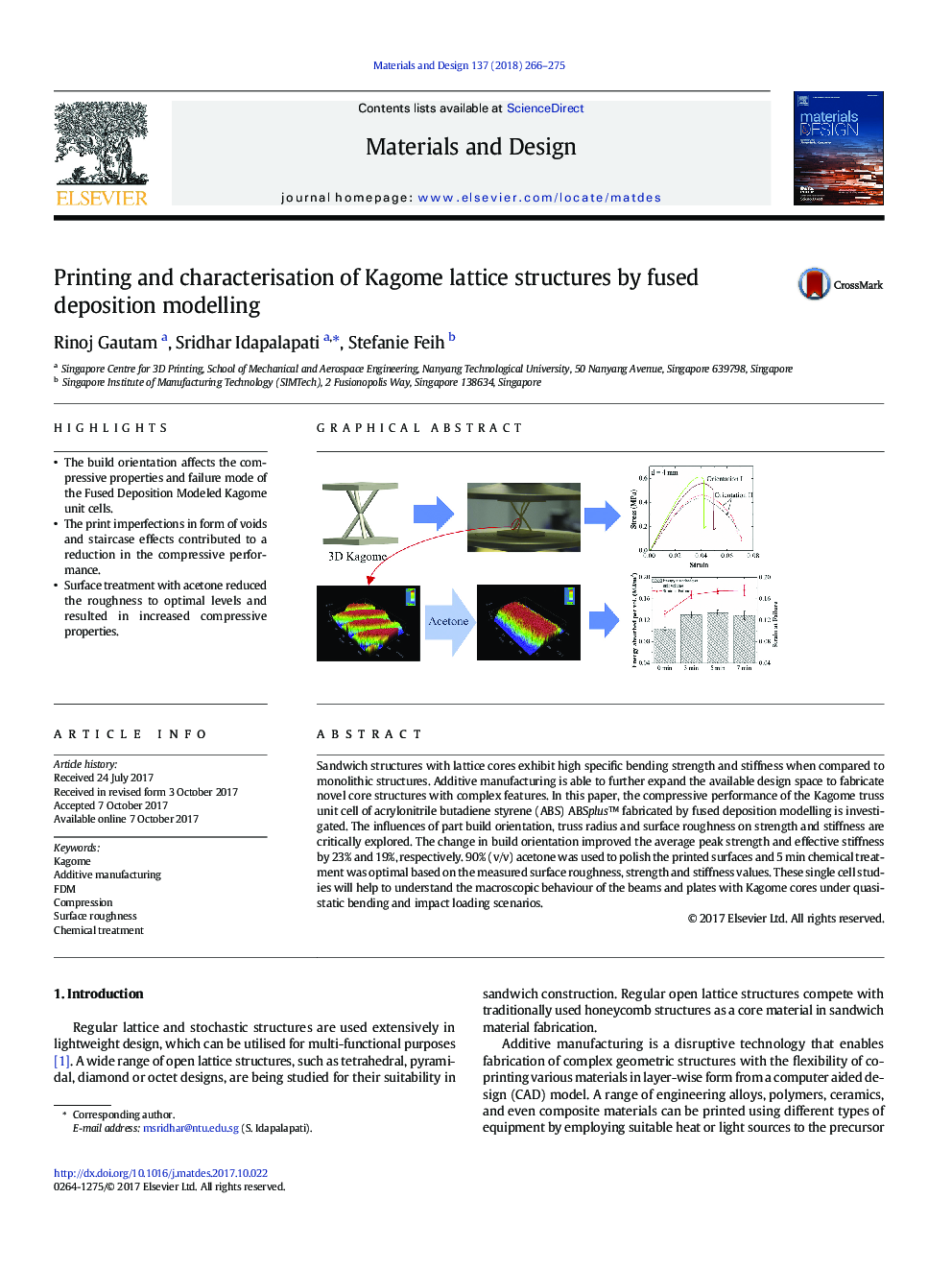| Article ID | Journal | Published Year | Pages | File Type |
|---|---|---|---|---|
| 5023078 | Materials & Design | 2018 | 10 Pages |
â¢The build orientation affects the compressive properties and failure mode of the Fused Deposition Modeled Kagome unit cells.â¢The print imperfections in form of voids and staircase effects contributed to a reduction in the compressive performance.â¢Surface treatment with acetone reduced the roughness to optimal levels and resulted in increased compressive properties.
Sandwich structures with lattice cores exhibit high specific bending strength and stiffness when compared to monolithic structures. Additive manufacturing is able to further expand the available design space to fabricate novel core structures with complex features. In this paper, the compressive performance of the Kagome truss unit cell of acrylonitrile butadiene styrene (ABS) ABSplus⢠fabricated by fused deposition modelling is investigated. The influences of part build orientation, truss radius and surface roughness on strength and stiffness are critically explored. The change in build orientation improved the average peak strength and effective stiffness by 23% and 19%, respectively. 90% (v/v) acetone was used to polish the printed surfaces and 5 min chemical treatment was optimal based on the measured surface roughness, strength and stiffness values. These single cell studies will help to understand the macroscopic behaviour of the beams and plates with Kagome cores under quasi-static bending and impact loading scenarios.
Graphical abstractDownload high-res image (323KB)Download full-size image
